How to Tell Which Wiper Blades You Need
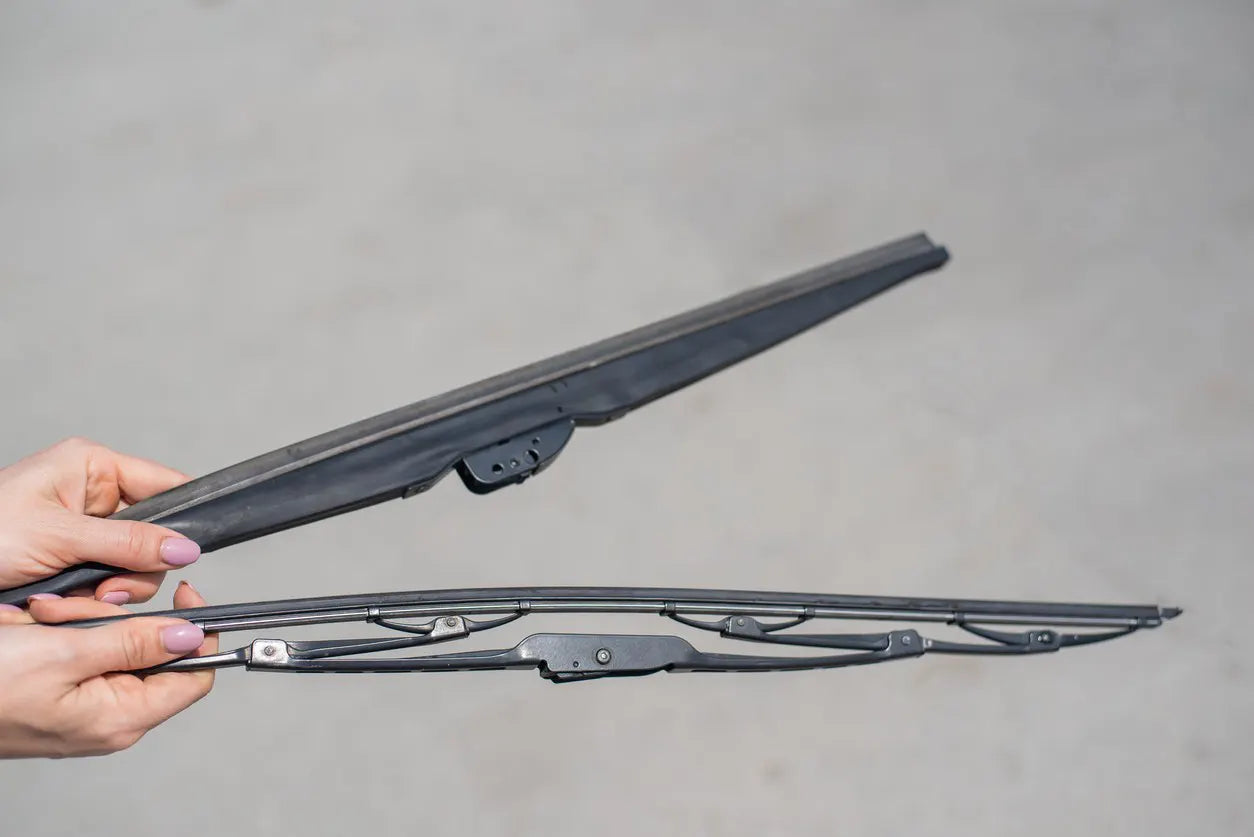
Your wiper blades go through a lot – especially in this country. Whether it’s rain, snow, sleet or any other debris that comes their way, they take their fair share year in, year out.
So, when it comes to replacing them, using the right wiper blades for your car is vital. Too small, and they won’t cover your windscreen. Too big, and you run the risk of wearing them out sooner than you want.
If you’re wondering “what size wiper blades do I need?”, then you’re in the right place. We’ll run through everything you need to know to help you find the exact type of wiper blades for your car.
Collapsible content
Finding the Correct Size Wiper Blades
When it’s time to replace your car’s wiper blades, there are a few different options you can take.
Heading over to our reg checker is the easiest and quickest way to find exact-fit wiper blades for your car. Just enter your reg and in seconds, we’ll track down the size and type of wiper blades that match your vehicle.
You can also find the right wiper blade size in your car’s owner’s manual. Don’t have it to hand? No problem, there should be a digital version you can view online.
There’s also the option of measuring your wiper blades, which leads us nicely to our next section…
How to measure Wiper Blades
Measuring your wiper blades is a safe bet, and it’s easy too! Simply pull your wiper arm away from your windscreen and use a tape measure to pinpoint the size.
When removing your wiper blade, make sure the arm doesn’t spring back and break the windscreen.
Also, be sure to measure the wiper when flat, not curved.
Like we said up top, wiper blade size is important. Oversized blades can bump into each other, damaging both the wiper motor and the blades themselves. And because they’re too big, they may struggle to do their job, leaving areas uncleared and reducing your visibility on the road. The same goes for too-small wiper blades, too.
Our reg checker should point you to the exact size for your make and model, so you don’t have to worry about measuring them yourself.
How will I know when my wiper blades need replacing?
Like any other part of your car, windscreen wiper blades wear down over time. And depending on how often you use them, they can deteriorate after just six months. This is because rubber degrades in hot, cold, wet, and dry weather.
It’s recommended that you replace your wipers every 12 months, or when you experience any of the following:
- Rough, juddery movement over your windscreen
- Streaks or blank spots after use
- Noise or squeaking across both dry and wet screens
- Cracks or rough edges on the rubber blades
- Improper contact with the windscreen
If your blades aren’t working like they should, replace them immediately. It’s illegal to drive with wiper blades that aren’t functioning normally, and you could be fined £2,500 and receive three penalty points on your licence.
Why do I need to replace my windscreen wipers?
Old or damaged wiper blades can’t fully clean your windscreen. And an unclean windscreen means hampered visibility, which can create serious safety hazards for both you and other drivers. Plus, there are the legal implications we mentioned above to consider, too.
Worn-out wipers can also damage your car. If the rubber blade is cracked or rough, then the wiper arm can rub against the glass. Over time, this can increase the chance of your glass cracking.
Lastly, ineffective windscreen wipers can mean MOT failure. It can be frustrating to let something as trivial as cracked wiper blades be the reason for failure, so it’s well worth double-checking them before you take the test.
What Wiper Blades Do I Need?
There are three main types of wiper blades available. The model of your car tells you which of these you need.
Collapsible content
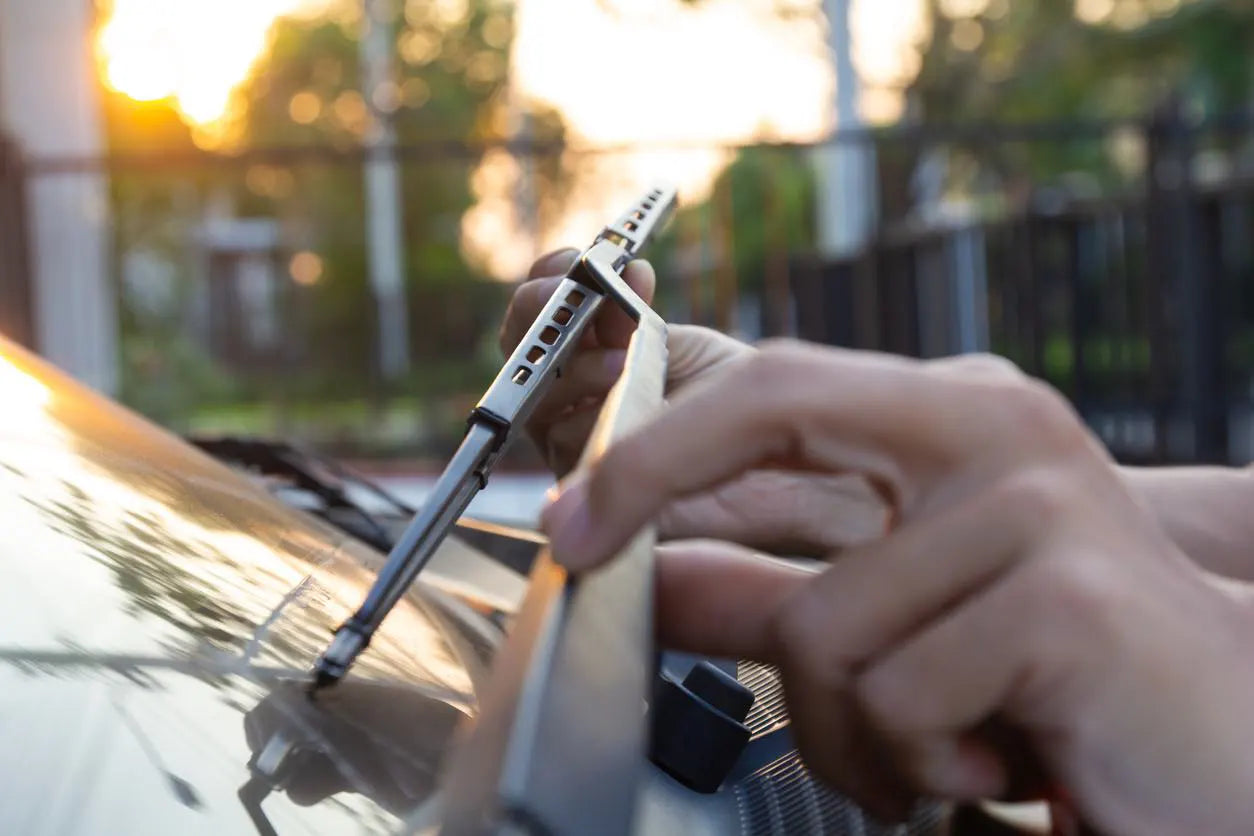
Standard Wiper Blades
These blades have a small rubber strip attached to a metal holder, along with four windscreen pressure points. They’ll generally match the wiper blades your car came with.
Flat Wiper Blades
This variety – also known as beam wiper blades – sits lower on the windscreen, putting more pressure on the glass. This reduces air resistance and allows for a better wiping motion, creating less noise when driving at faster speeds.
Their aerodynamic design also features multiple windscreen pressure points, so you get more efficient wiping and enhanced visibility whatever the weather.
Hybrid Wiper Blades
These types of wiper blades use the best of both from the above – taking advantage of the aerodynamic shape of flat blades while harnessing the similar metal construction as a standard type blade. The result is optimal wiping performance; an outer plastic frame improves airflow to create even pressure across the windscreen, while an inner steel frame creates support for the rubber part of the wiper blade.
These types of blades are also less bulky, meaning a smaller opportunity for ice and snow to build up – this makes them better suited to all weather conditions versus standard blades.
To make finding the right blades a little easier, we’ve gathered five of the best-selling cars across the UK, along with the make and model of wipers they use.
We hope this guide answered your questions but if you’re looking for more information, our comprehensive hub of windscreen wiper blade resources is filled with valuable know-how to help you choose, fit and care for your car wiper blades. Explore more, below.
-
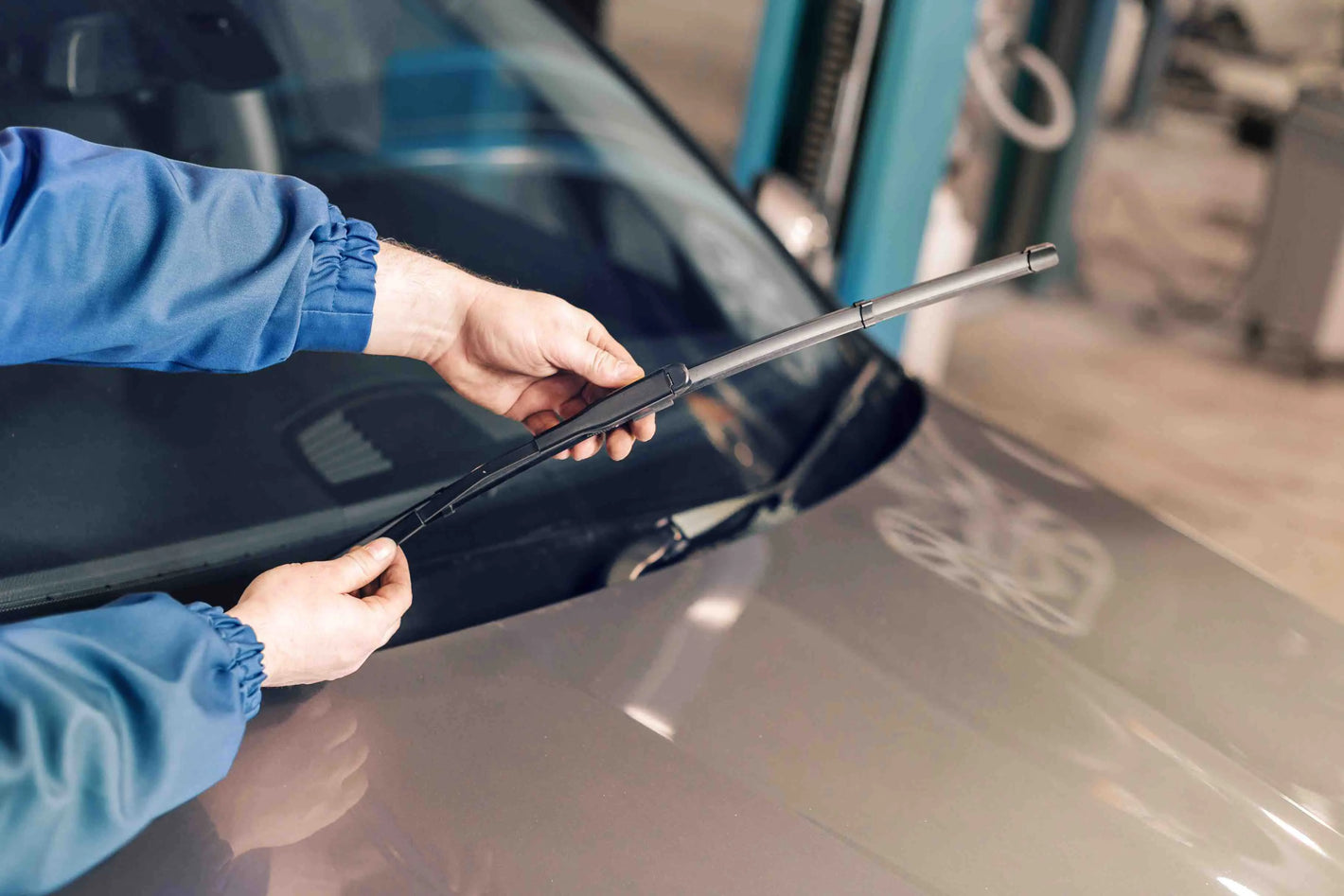
Find Your Wiper Blades
Search NowReady to find new wipers for your car? Search using your reg number or by make & model to quickly find the high-quality wipers you need – at around a third of the cost of standard dealership prices.
-

All About Windscreen Wiper Blades
Find Out MoreLooking to learn more about choosing the right wiper blades? Start here. Our comprehensive hub of information will keep you right.
-

How to Fit Wiper Blades
Find Out MoreWith the right know-how, replacing your car’s old wiper blades is a breeze. Our step-by-step instructions walk you through the process to ensure the best results.
-
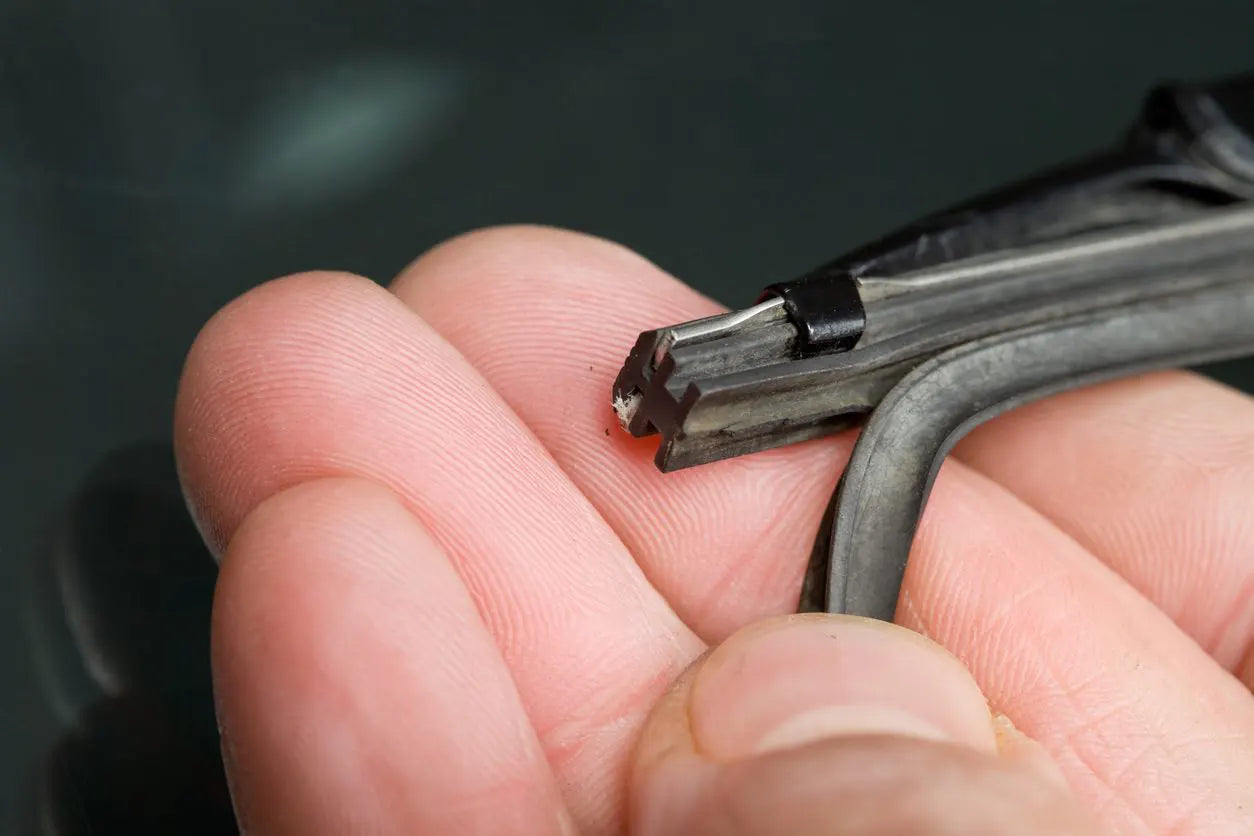
Caring for Your Wiper Blades
Find Out MoreWiper blades are subject to wear and tear, but you can maximise their longevity by following our care tips. We’ve got the answers to this and more, right here.
-
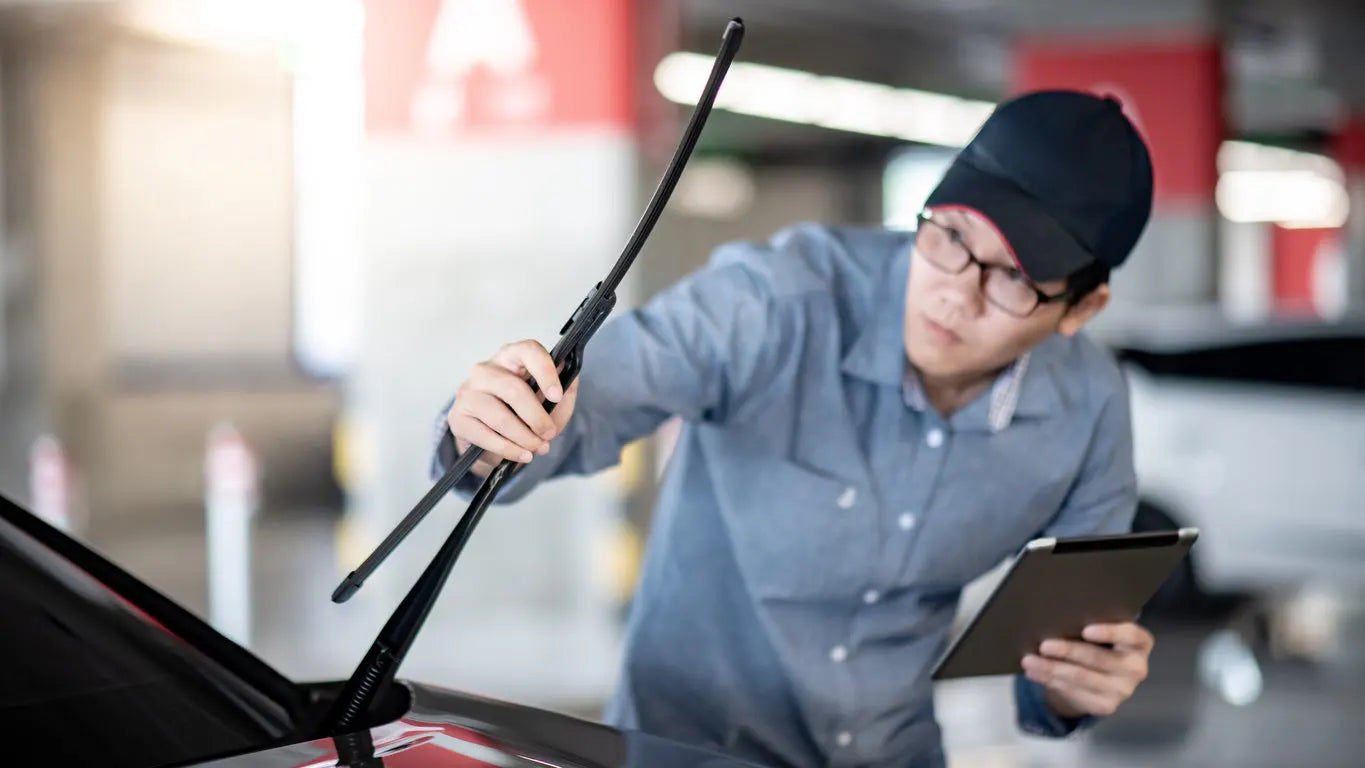
Troubleshooting Issues with Your Wiper Blades
Find Out MoreProperly functioning wiper blades aren’t just essential for road safety, they’re a legal requirement. We discuss common wiper blade problems and how to solve them.
-

Windscreen Wiper Blade FAQs
Find Out MoreThink that you’re in need of new windscreen wipers, but have a few questions? We’ve tackled queries around wiper sizes, changing blades and more on our FAQs page.





